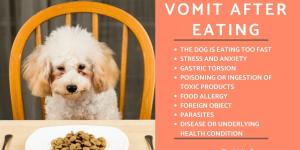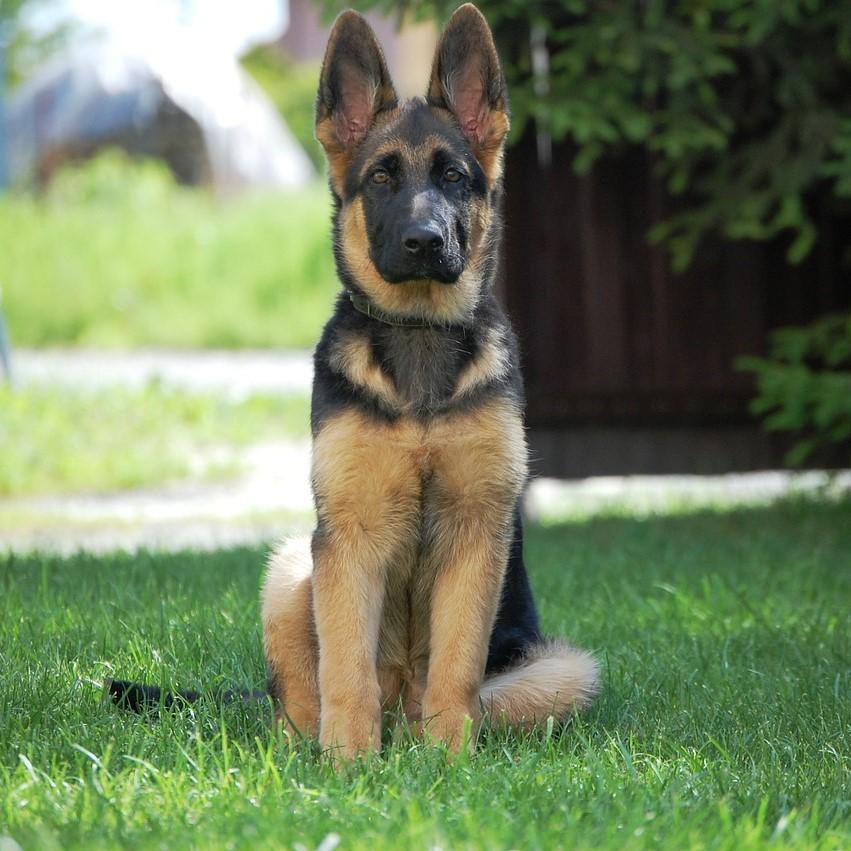Gastric Torsion in Dogs



See files for Dogs
Gastric torsion in dogs is typical of large breeds, such as the German Shepherd, the Great Dane, the Giant Schnauzer and the St. Bernard. This condition happens when there is a significant dilation and torsion of the stomach, due to the accumulation of gases, food or liquid. The ligaments of the stomach can not withstand the dilation, causing the stomach to twist.
Under normal conditions, the dog's stomach empties its contents following its own physiological mechanisms. When there is torsion, however, it cannot release the content and starts to dilate. As a result, the dog tries to vomit to expel the contents and the stomach ends up turning around itself, completely obstructing the holes that connect it with the esophagus and intestine.
As this happens, the blood vessels of the digestive tract are compressed and therefore blood circulation is interrupted, causing some organs to stop working. Gastric torsion is an extremely serious disease that if untreated can cause the death of the animal.
Read this AnimalWised article to find out about gastric torsion in dogs, its symptoms and treatment.
What are the causes of gastric torsion in dogs?
Although gastric torsion can occur in any breed, it is the largest breeds that have a greater predisposition to it. Another risk factor is having a deep chest, as happens in breeds like the Weimaraner, the Standard Poodle or the Boxer.
The causes of this gastric torsion are as follows:
- Large intake of food or liquids: This usually happens when the dog eats lots of food or drinks liquids quickly and after physical exercise. It is typical of young dogs of large breeds. In older dogs it is usually due to an accumulation of air that cannot be physiologically evacuated.
- Stress: Gastric torsion can occur in dogs that easily become stressed due to changes in routine, mating, excessive excitement, etc.
- Genetic factors: Before adopting a dog, check its parent's medical history.

What are the symptoms of gastric torsion in dogs?
Since gastric torsion can happen to any dog and must be addressed immediately, it is good to know the symptoms in order to react in time. Thus, the most common signs that a dog may be suffering from a dilated stomach or gastric torsion are:
- Failed attempts at vomiting or nausea,
- Anxiety and restlessness.
- Abundant salivation.
- Distended abdomen: The abdomen looks dilated, and you can hear a tympanic sound when you tap it.
- Difficulty breathing.
- Weakness, depression and a lack of appetite.
If your dog exhibits any of these symptoms, you should take it to the vet immediatelyas it might be suffering an episode of dilation and gastric torsion.

How is gastric torsion diagnosed in dogs?
The vet will make the diagnosis of gastric torsion or stomach dilation depending on the clinical symptoms that the dog presents. The breed and history of the dog can support the diagnosis because, as discussed in previous sections, this disease is more common in some breeds and in dogs that have suffered gastric torsion previously.
X-rays are also often used to confirm the diagnosis of gastric torsion, as they help the vet establish whether the stomach is distended or not. If the stomach has rotated, the pylorus (which connects the stomach with the intestine) will be observed displaced from its normal position.

How is gastric torsion treated in dogs?
There are no home remedies or tricks to apply if your dog suffers from gastric torsion. When you notice the symptoms, you should go to the vet immediately. This is an emergency that puts the animal's life in jeopardy.
Try to handle the dog with care until you reach your vet. Prevent the dog from moving too much.
Once there, the vet will sedate the animal and administer fluids and intravenous antibiotics. Next, the vet will extract the contents of the stomach through a gastric tube. The stomach will become decompressed and a gastric lavage will take place. Should using a probe be impossible, the stomach will be pierced with a drill or needle. Finally, there will be surgery in which the stomach will be fixed to the chest wall (gastropexy) so as to reduce the risk of another gastric torsion.
The prognosis varies depending on the severity of the condition. When dilation and torsion are treated early, the prognosis is usually favorable. However, if necrosis has started to take place, the mortality rate is high even after surgery. Dogs that pass the 48 hours marker after surgery usually have very good chance of surviving.
You must go to a veterinarian medical centre as soon as possible. Otherwise, your dog could die of gastric torsion in a few hours.

Can you prevent gastric torsion in dogs?
It is very important to be forewarned and informed to avoid a possible dilation and gastric torsion in the dog, especially in the summer. Here are some tips:
- Do not feed your dog too much at once: prevent your pet from ingesting large amounts of food. The aim is to distribute the food throughout the day, in two or three smaller portions rather than a large one.
- Do not let your dog drink lots of water in one go, especially after lunch.
- Restrict physical exercise: prevent the dog from doing a lot of physical activity before and after meals, leave a 2 hour margin.
- Do not supply food late at night.
- Do not stress the animal while eating: leave it to eat calmly and without stress.
This article is purely informative. AnimalWised does not have the authority to prescribe any veterinary treatment or create a diagnosis. We invite you to take your pet to the veterinarian if they are suffering from any condition or pain.
If you want to read similar articles to Gastric Torsion in Dogs, we recommend you visit our Other health problems category.









